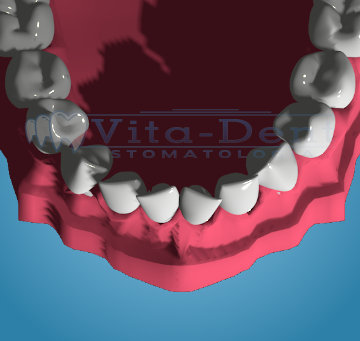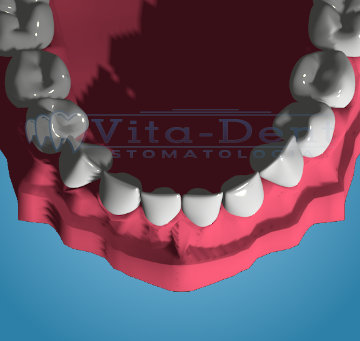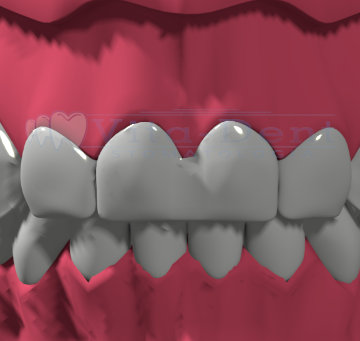Orthodontic defects
In addition to orthodontic defects related to planes (vertical, transverse, anteroposterior), patients with defects such as crowding of teeth, two-jaw protrusion or dental abnormalities report to our orthodontic office. These are often abnormalities occurring together with other orthodontic diseases.Two-jaw protrusion
This is a condition in which both jaws (jaw and jaw) are positioned too prefront. This position of the jaws causes excessive deflection of the upper and lower incisal teeth and unfavorable bulging of the lips. It happens that two-jaw protrusion occurs in an unintensified form, then the diagnosis is based on a cephalometric image, which allows to establish the relationship of the jaw and mandible to the entire craniofacial area.Tooth stamping
One of the most common dental defects found in the orthodontic office is crowding of teeth. Tooth crowding is differentiated on the basis of their severity. We distinguish light, moderate and intense crowding. The cause of tooth crowding is usually the difference between the amount of space needed to position the teeth and the amount of bone. Modern diet, as well as the way of preparing meals, is not conducive to stimulating bones to develop. As a result, more and more often we meet with crowding of teeth, which, in order to enable the correct function, position themselves incorrectly, deteriorating the aesthetics of the smile and the chewing function.Dental abnormalities
In addition to tooth crowding, there are many other diseases that cause aesthetic and functional problems of the masticatory system. These include disorders in the structure of teeth:- disorders in the structure of tooth roots
- fused teeth
- too large teeth (big-toothed)
- too small teeth (small-toothed)
- fused teeth and fused teeth
- too many teeth – supernumerary teeth
- too few teeth
- additional teeth
- tooth rotation
- Teeth position swapping
- teeth tilted
- tilted teeth

Crowding of teeth before treatment

Tooth crowding after treatment

Fused teeth
Other orthodontic defects – Frequently asked questions:
- Does the treatment of double-jaw protrusion always require tooth extraction? No. During the first orthodontic visit, impressions are taken and the documentation necessary to create a treatment plan is made. It is only on this basis that the orthodontist decides on the treatment procedure. The method of treatment is different for each patient, so it is difficult to close any defect in the treatment schemes.
- Is tooth removal required to relieve tooth crowding? No. Modern orthodontics allows you to deal with crowding in many ways. One of the methods of creating a missing place is to remove teeth, but this method is used extremely rarely. There are other ways to properly align your teeth without having to extract.
